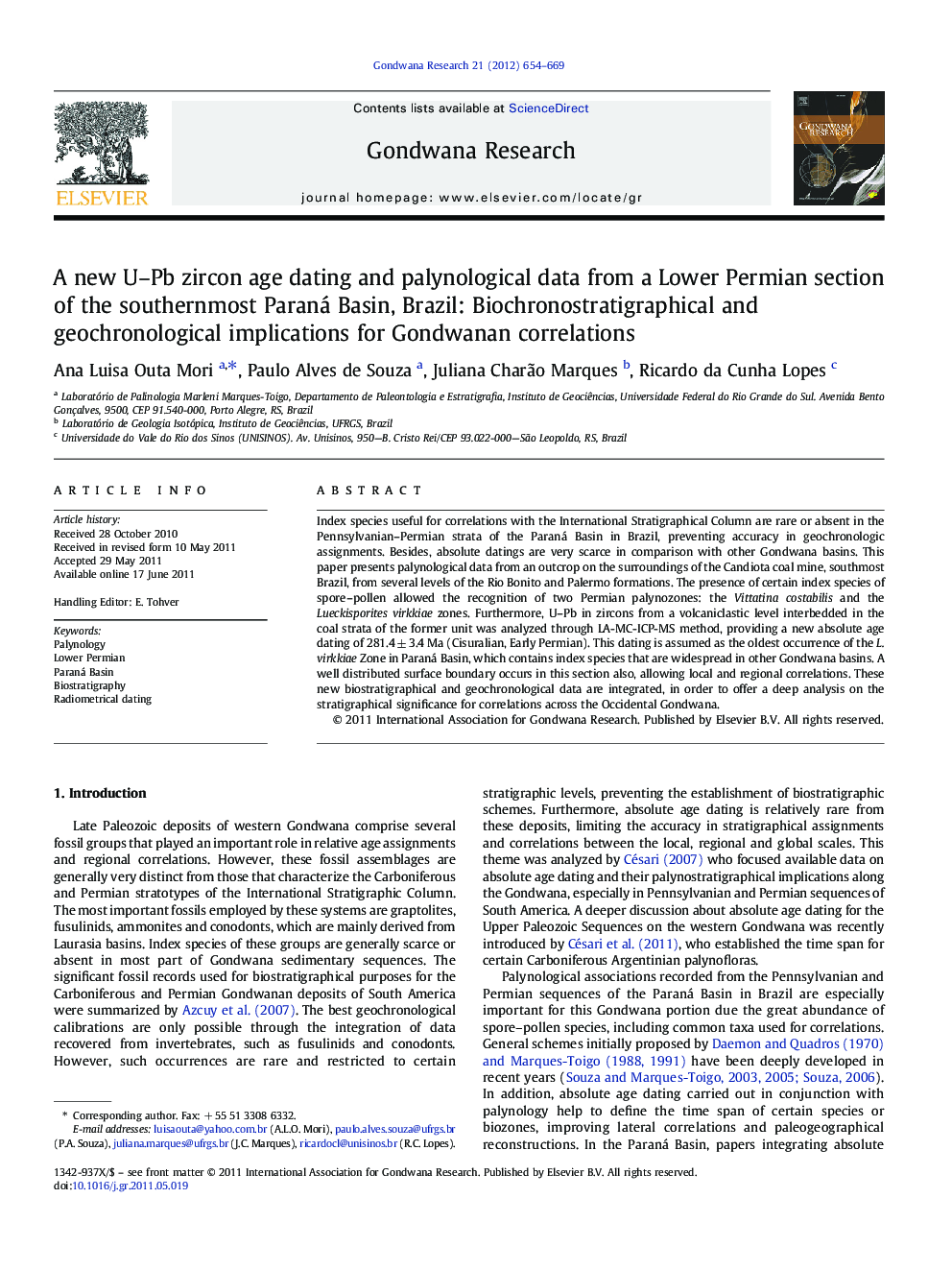| Article ID | Journal | Published Year | Pages | File Type |
|---|---|---|---|---|
| 4727618 | Gondwana Research | 2012 | 16 Pages |
Index species useful for correlations with the International Stratigraphical Column are rare or absent in the Pennsylvanian–Permian strata of the Paraná Basin in Brazil, preventing accuracy in geochronologic assignments. Besides, absolute datings are very scarce in comparison with other Gondwana basins. This paper presents palynological data from an outcrop on the surroundings of the Candiota coal mine, southmost Brazil, from several levels of the Rio Bonito and Palermo formations. The presence of certain index species of spore–pollen allowed the recognition of two Permian palynozones: the Vittatina costabilis and the Lueckisporites virkkiae zones. Furthermore, U–Pb in zircons from a volcaniclastic level interbedded in the coal strata of the former unit was analyzed through LA-MC-ICP-MS method, providing a new absolute age dating of 281.4 ± 3.4 Ma (Cisuralian, Early Permian). This dating is assumed as the oldest occurrence of the L. virkkiae Zone in Paraná Basin, which contains index species that are widespread in other Gondwana basins. A well distributed surface boundary occurs in this section also, allowing local and regional correlations. These new biostratigraphical and geochronological data are integrated, in order to offer a deep analysis on the stratigraphical significance for correlations across the Occidental Gondwana.
Graphical abstractFigure optionsDownload full-size imageDownload as PowerPoint slideResearch highlights► Palynostratigraphy from the Rio Bonito and Palermo formations, southernmost Paraná Basin. ► The Permian Vittatina costabilis and Lueckisporites virkkiae zones were recognized. ► U–Pb geochronology of zircons yielded new absolute age of 281.4 ± 3.4 Ma, and is correlated with the L. virkkiae Zone.
